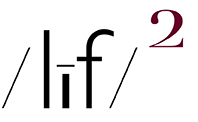(embiggenable)
“Sometimes it feels like I write about gear too much. But it's much easier to write about than how and why we actually make photographs.” ~ written on the interweb
SINCE I BEGAN BLOGGING-c.2005-IT HAS ALWAYS BEEN MY INTENTION to avoid writing about gear and, to a lesser extent, technique. That’s cuz of my bedrock belief that writing about and encouraging comments / discussion about gear is best left to the domain of the hopelessly un-imaginative / un-creative picture makers.
That written, I also believe that it is nearly impossible to write about the how of picture making inasmuch as-despite the prevalence of the How-To-Master (pick a genre) advice sites / books-the making of pictures that are worth more than a passing glance simply can not be reduced to rules / formulas. Rather, as Walker Evans wrote:
The meaning of quality in photography’s best pictures lies written in the language of vision. That language is learned by chance, not system…Whether he is an artist or not, the photographer is a joyous sensualist, for the simple reason that the eye traffics in feelings, not in thoughts.
iMo, these Evans quotes are amongst the best I have ever heard / read, re: the how-to of picture making and why it is so difficult to write about. That’s cuz there are not many picture makers who are able to separate their feelings from their thoughts when making pictures, much less be able to write about it. In large part that difficulty originates from the long-held idea that a photograph is suppose to “say” something / have “meanings”. That a photograph can not be enjoyed and appreciated as a sensuous object, in and of itself*.
And then, of course, there is the dander of expressing feelings. That is, the “danger” of being perceived as getting all soft and mushy / touchy feely cuz, when you come right down to it, feelings are deeply personal and often times expressing those feelings opens one up to all kinds of ignorant responses. And, when you think about it, what good would there be in letting anyone know how / what you were feeling when making a picture?
After all, that’s a very personal experience that comes from within, from knowing one self and how you see the world, aka: one’s own understanding of the language of vision.
Think about it.
*Given that true intellectual and emotional compatibility
Are at the very least difficult
If not impossible to come by
We could always opt for the more temporal gratification
Of sheer physical attraction
That wouldn't make you a shallow person
Would it? ~ Lyle Lovett
